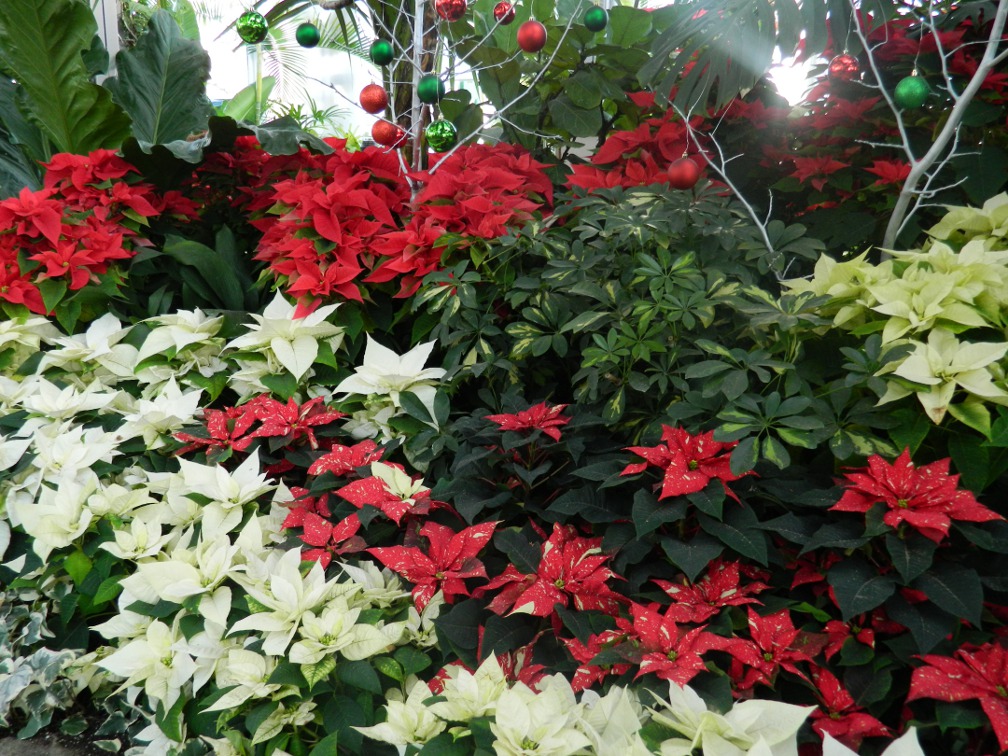The poinsettia (/p??n's?ti?/ or /p??n's?t?/) (Euphorbia pulcherrima) is a commercially important herb varieties of the diverse spurge family. The kinds is indigenous to Mexico. It is specifically well known for its red and green foliage and is trusted in Christmas floral shows. It derives its common English name from Joel Roberts Poinsett,[3] the first USA Minister to Mexico,[4] who introduced the plant to the united states in 1825.
Euphorbia pulcherrima is a shrub or small tree, reaching a elevation of 0 typically.6-4 metres (2 ft 0 in-13 ft 1 in). The flower bears dark inexperienced dentate leaves that measure 7-16 centimetres (2.8-6.3 in) long. The colored bracts--which 're normally flaming red but can be orange, pale green, cream, pink, white, or marbled--are often recognised incorrectly as bloom petals for their groupings and colors, but are actually leaves.[citation needed] The colors of the bracts are created through photoperiodism, and therefore they require darkness (12 hours at a time for at least five days in a row) to change color. At exactly the same time, the vegetation require considerable light throughout the day for the brightest color. The flowers of the poinsettia are unassuming and do not attract pollinators. They can be grouped within small yellowish structures found in the center of every leaf number, and are called cyathia. The poinsettia is local to Mexico. It really is found in the untamed in deciduous tropical forests at average elevations from southern Sinaloa down the whole Pacific coast of Mexico to Chiapas and Guatemala. Additionally it is found in the inside in the hot, seasonally dried forests of Guerrero, Oaxaca, and Chiapas. Studies of E. pulcherrima growing in the open in Nicaragua and Costa Rica have yet to be confirmed by botanists. A couple of over 100 cultivated varieties of poinsettia.
The plant was employed by the Aztecs to produce red dye and as an antipyretic medication. In Nahuatl, the language of the Aztecs, the plant is called Cuitlaxochitl, meaning "flower that grows in residues or soil" Today it is well known in Mexico and Guatemala as Flor de Noche Buena, meaning Christmas Eve Flower. In Spain it is recognized as Flor de Pascua or Pascua, signifying Easter flower. In Chile and Peru, the plant became known as Crown of the Andes. In Turkey, it is named Atat?rk's flower because Atat?rk, the creator of the Republic, liked this blossom and made a substantial contribution to its cultivation in Turkey.[citation needed] In Hungarian, it is named Santa Claus' Bloom, and it's widely used as a Xmas decoration.
The plant's connection with Christmas started out in 16th-century Mexico, where tale tells of a girl, commonly called Pepita or Maria, who was too poor to give a present for the party of Jesus' birthday and was motivated by an angel to assemble weeds from the roadside and place them before the church altar. Crimson blossoms sprouted from the weeds and became beautiful poinsettias. From the 17th century, Franciscan friars in Mexico included the crops in their Xmas activities. The star-shaped leaf structure is thought to symbolize the Celebrity of Bethlehem, and the red color represents the bloodstream sacrifice through the crucifixion of Jesus. Poinsettias are popular Xmas decor in homes, churches, office buildings, and across THE UNITED STATES anywhere else. They are available in large numbers from grocery, drug, and hardware stores. In the United States, 12 is National Poinsettia Day december.
Poinsettia Tree In Mexico Related Keywords amp; Suggestions Poinsettia
Poinsettia Tree In Mexico Related Keywords amp; Suggestions Poinsettia

Poinsettia Plants growing in a PittMoss® based grower mix at Hothouse


Tidak ada komentar:
Posting Komentar